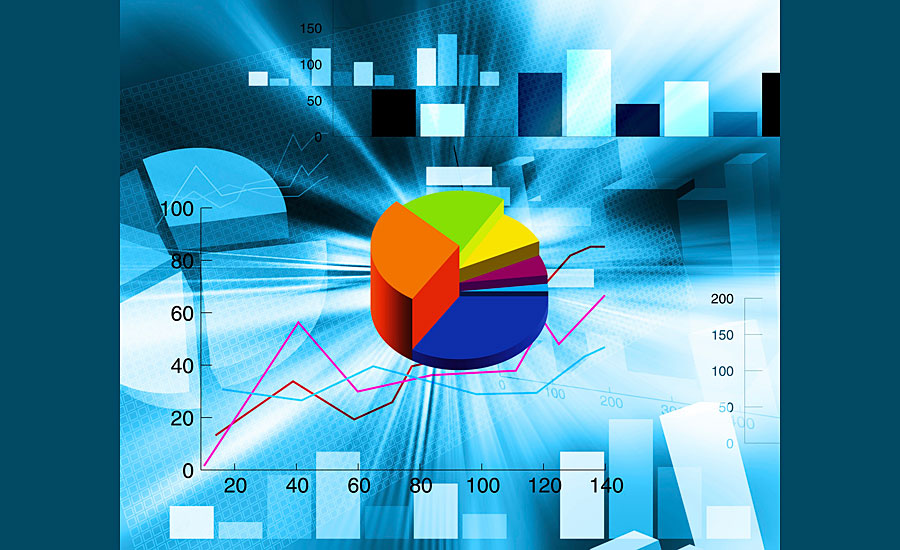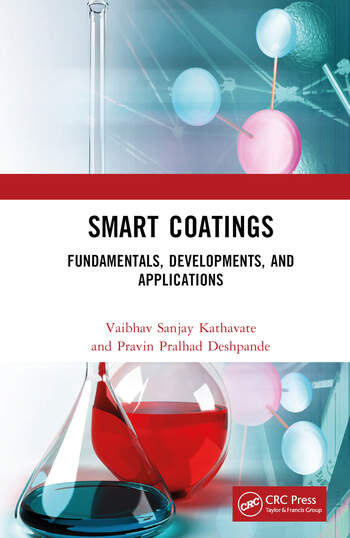Study Predicts Growth in Market for Smart Coatings that Fight Bacteria and Viruses

GLEN ALLEN, VA — Industry analyst firm n-tech Research has issued a new research report, Smart Antibacterial and Antiviral Markets, 2020. In the study, the firm projects that the market for smart antibacterial and antiviral products will reach $1.3 billion by 2025, driven by efforts to combat COVID-19 and provide safer workplace, healthcare and improved public health. Industry analyst n-tech Research predicts that end users will now buy more antimicrobial coatings and surfaces to prevent the spread of pathogens. While many of the developments in this area are at their earliest stages, this report also looks at the potential for investment and supply chain dominance by large multinationals such as DSM and AkzoNobel.
N-tech Research has been tracking market developments and business dynamics in antibacterial smart coatings and surfaces sector since 2014. The firm’s latest report identifies the key opportunities emerging for smart materials and smart surfaces that target both antibacterial and antiviral markets. COVID-19’s impact on consumers and industries has been far reaching and is shaping the opportunities in this sector.
Among the issues discussed in the report is how COVID-19 drives the entire antimicrobial market. In the past, the biggest drivers for smart anti-microbials have been healthcare-acquired infections (HAIs) and antibiotic-resistant bacteria. This report shows how the advent of COVID-19 has broadened the market. The severity of COVID-19 means that both consumer and industrial markets are now intensely interested in providing anti-microbial protection to employees and loved ones. The COVID-19 scare promoted product development into both antivirals and antibacterials
The study also looks at changing patterns in end-user price sensitivity. In the past, consumers have been reluctant to buy smart antimicrobial products because of their high price and short life. Today, this has changed as smart antimicrobials are justified on the basis of health, economic and societal requirements. A major focus of antimicrobial R&D is to make them more cost effective and give them longer lifetimes
Also explored in the report is the new opportunity presented by antivirals. Antivirals have understandably received special attention in these efforts. This report discusses how new materials are being developed specifically for antiviral protection.
Researchers also explored why smart materials are of growing importance in the antimicrobial market. Established smart materials – self-cleaning and self-healing coatings and surfaces – are obviously important in providing anti-microbial functionality. Affix Labs and others have introduced an antiviral coating with self-cleaning technology based on silane quaternary ammonium. Polymeric biocides are distinctly smart – they embody antimicrobial characteristics with self-healing ability. DSM Biomedical, offers an anti-microbial coating that self-assembles and is based on hydrophilic technology. Hydrogels are sometimes claimed to have considerable promise because they can incorporate and/or release antimicrobial agents
The report also explains where the R&D centers of excellence are to be found for smart antimicrobials. Some major academic institutions that this report indicates may produce breakthroughs in smart antimicrobials include ETH (Switzerland, COVID sensor), Northwestern University (wearable COVID sensor), RMIT University (Australia, gallium-based liquid metal nanoparticles), University of Hong Kong, the Hong Kong University of Science and Technology (antiviral coatings), Ben-Gurion University of the Negev (Israel, antiviral nanoparticle coatings), McMaster University (Canada, self-cleaning antibacterial surface that repels bacteria), and the University of Texas (sensor for COVID-19 and flu).
This report is accompanied by an Excel spreadsheet with granular 10-year forecasts of all the markets considered in the report with breakouts by application, type of end user and type of material. The report also provides coverage of the supply structure including an assessment of the product/market strategies of leading suppliers and how supply chains are evolving.
The report forecasts that by 2025, smart antiviral coatings are expected to generate $340 million in revenue, with much of this revenue coming from pre-existing products that have been re-purposed for the age of COVID-19. Rebranding or re-purposing existing products enables suppliers to quickly move into the rapidly growing market for antivirals.
Smart antibacterial surfaces are expected to produce revenues for $306 million by 2025. These include surfaces with embedded sensors and delivery mechanisms that deliver antibacterials. Smart cleaning surfaces and smart healing surfaces are also relevant. Future antimicrobial smart surfaces may embody sensors to identify and detect dangerous bacteria. Antiviral surfaces do not exist yet but may appear on the market in the next eight to 10 years.
N-tech expects a flood of material innovations in order to stop the spread of bacteria and especially viruses. Novel materials including biocides, antimicrobial peptide coatings, organosilane nanocoatings and liquid metals are forecast in the report to reach $227.3 million for antibacterial use.
Additional details of the report are available at https://www.ntechresearch.com/market-reports/smart-antibacterial-materials/.
Looking for a reprint of this article?
From high-res PDFs to custom plaques, order your copy today!






